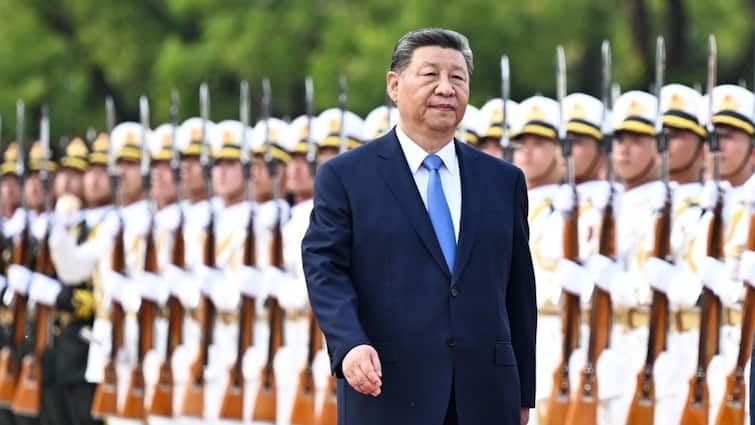Last Updated:
Harley’s, with average price of Rs 5 lakh–Rs 50 lakh, was forced to exit due to low demand and business unviability, as India’s two-wheeler market is dominated by affordable bikes

Using Harley-Davidson as a test case, Trump said it faced a 200 per cent tariff on its motorcycles in India and in a bid to avoid paying duties, ultimately set up a plant in the country. (Reuters)
A new day, but the same old diatribe from Donald Trump. The United States President yet again accused India of exploiting America through unfair trade practices, claiming the relationship was “one-sided” and stacked against the US.
Trump, who has missed no opportunity to justify his 50 per cent tariffs on Indian imports, said India imposed some of the highest tariffs in the world, making it difficult for American companies to conduct business even as Indian goods flowed freely into the US market.
Recommended Stories
Using Harley-Davidson as a test case, Trump said it faced a 200 per cent tariff on its motorcycles in India and in a bid to avoid paying duties, ultimately set up a plant in the country.
However, facts and numbers tell a very different story of robust, balanced, and increasingly strategic trade between India and the United States. Here’s a breakdown of Trump’s claims versus reality.
Claim 1: “Harley-Davidson couldn’t sell in India due to 200 per cent tariffs.”
Reality: Harley-Davidson’s exit had little to do with tariffs. Large imported motorcycles did face tariffs of 50-100 per cent, sometimes cited as “200 per cent” depending on the model and import route. However, under Trump’s own presidency (2018), India reduced tariffs on high-end motorcycles from 100 per cent to 50 per cent after US pressure. Despite the cut, Trump continued to claim India was “cheating”.
While Harley tried mitigating tariffs by setting up a manufacturing plant in Haryana, the company exited India in 2020 due to low consumer demand in a market dominated by affordable two-wheelers.
India is the world’s largest two-wheeler market, dominated by affordable bikes such as Hero, Bajaj, and Honda. Harley’s average price was Rs 5 lakh–Rs 50 lakh, way beyond the reach of most Indian buyers. In 2011, when it set up the Haryana plant, even then Harley sold less than 3,000 units a year (tiny in a 20-million-bikes market), forcing it to exit citing low demand and business unviability, not tariffs.
Essentially, Harley’s failure was due to market mismatch and not a trade war.
Claim 2: “India poured everything into the US; America sent nothing back.”
Reality: US exports to India are not only robust, but growing. In 2023, US exports to India crossed $70 billion, led by oil, defence hardware, aircraft, and technology. India is among the largest buyers of US defence equipment, including Apache helicopters, Boeing aircraft, and GE engines.
American giants—Apple, Microsoft, ExxonMobil, GE—have expanded their footprint in India, contributing billions in investments.
Claim 3: “India flooded the US market.”
Reality: India’s share of US imports remains small compared to China. While India makes up 2.5 per cent of total US imports, China’s figure stands at 17 per cent. Far from “flooding” the US, India is still an emerging supplier, while China dominates the US import basket.
Beyond Tariffs: The Bigger Strategic Lens
The tariff debate ignores the true depth of India-US ties, which extend far beyond trade disputes.
Education & Students: Over 2,50,000 Indian students in US universities contribute nearly $25 billion annually to the American economy.
Technology & Services: US tech giants like Google, Amazon, Meta, and Microsoft generate $15–20 billion annually from India’s growing digital economy.
Financial & Consulting Services: JP Morgan, McKinsey, Goldman Sachs, and others earn $15–20 billion annually via Indian operations and outsourcing.
Defence & Security: India is now a major defence partner of the US, part of the QUAD framework and Indo-Pacific strategy.
Semiconductors & AI: Joint investments in chip manufacturing and critical tech are reshaping global supply chains.
Clean Energy: Collaboration in LNG, solar, and renewables is central to climate cooperation.
Diaspora Strength: With 4.5 million Indian Americans, people-to-people ties remain the backbone of the relationship.
Strategic affairs experts worry that it is this multi-dimensional relationship that Trump seems set to destroy.
Congressman Ro Khanna, taking to X on Wednesday, said: “We can’t allow the ego of Donald Trump to destroy a strategic relationship with India that is key to ensuring that America leads and not China.”
Accusing Trump of undermining 30 years of painstaking work to strengthen ties between the two countries, Khanna said: “He has imposed a 50 percent tariff on India, higher than any other country other than Brazil. It’s a higher tariff than the tariff on China. It is hurting India’s exports of leather and textiles into the United States. And it’s hurting American manufacturers and our exports into India. It is also driving India towards China and towards Russia.”
About the Author

Amit Shukla, Executive Editor at CNN-News18, heads the Input Desk, overseeing news gathering, editorial planning, and news coordination.
Amit Shukla, Executive Editor at CNN-News18, heads the Input Desk, overseeing news gathering, editorial planning, and news coordination.
Loading comments…
Read More




)